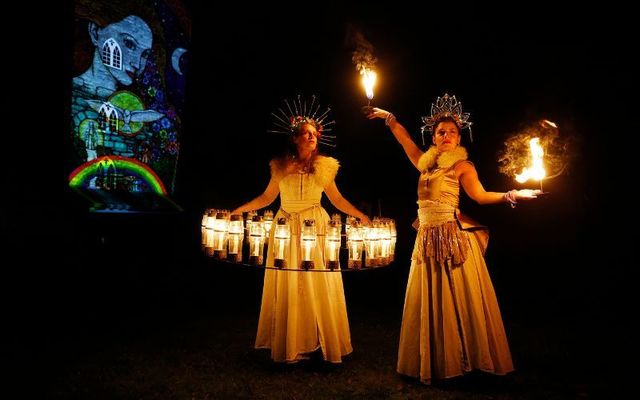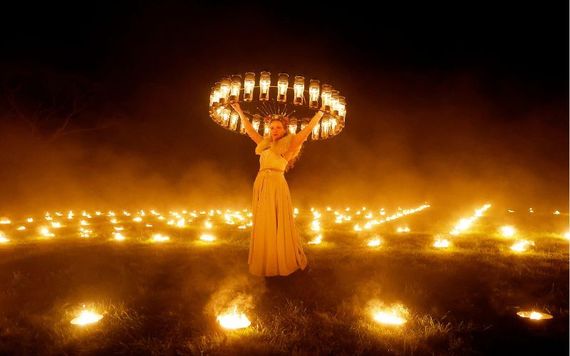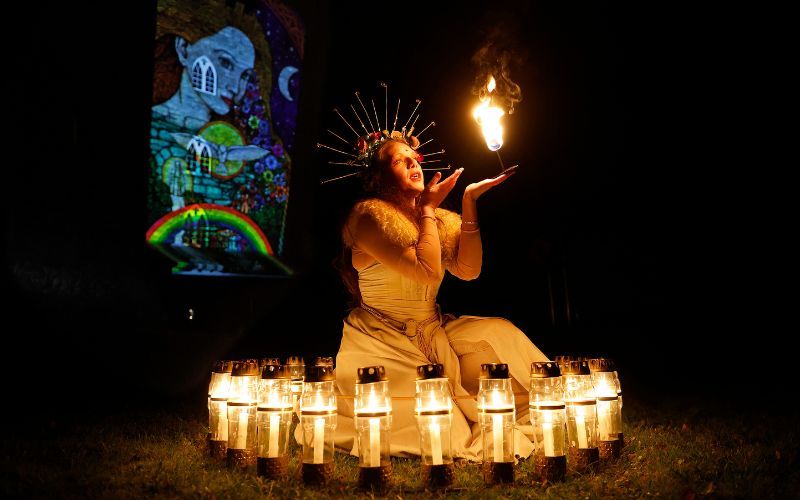Brigid 1500 Festival will celebrate the extraordinary St. Brigid with spectacular events taking place across Co Kildare.
Planning a vacation to Ireland in the New Year? Add a trip to County Kildare on your travel list because the Brigid 1500 Festival is not to be missed.
Taking place from January 27 - February 6, 2024, the program will focus on the values that St. Brigid championed including faith and spirituality, biodiversity and sustainability, arts and culture, social justice, peace, hospitality, and education.
Events will range from concerts and talks to art commissions and pilgrimages, plus much more!
Click here to find out more about Brigid 1500
Here are just some of the events you can look forward to:
- A special St. Brigid’s Day concert will take place in Naas at the Moat Theatre, St. David's Church, and The Potato Market.
- Mother Earth: A day of food and music, The Wonderful Barn, Leixlip
- She Moved Through The Fair: An evening of song, St. Brigid’s Cathedral, Kildare.
- The annual Féile Bríde will commence with a candlelight pilgrimage and ritual at St. Brigid's Well.
- Specially commissioned St. Brigid art pieces will be displayed along with an artists’ exhibition, and special honorary window displays.
- Light shows will be unveiled around the county at prominent locations in Clane, Newbridge, and Athy.
Artists confirmed to take part in Brigid 1500 include Eleanor McEvoy, Moya Brennan of Clannad, Mary Coughlan, Gemma Hayes, Una Healy, The Henry Girls, Lisa Lambe, and Nell Mescal, with many more to be announced.
A warm welcome awaits all who come to Kildare in search of St. Brigid!
St. Brigid - A Woman, A Life, A Legacy
St. Brigid is one of Ireland’s best-known Irish saints. She was born around 453 A.D. and died in 524. There are many stories and legends relating to her birth and early years. Although one story suggests Faughart, Co. Louth, as her place of birth, there is a strong tradition in Kildare that she was born in Ummeras, about 5 miles northwest of Kildare town.
Much of what we are told about Brigid comes from an oral tradition as records only began at the beginning of the 7th century. Brigid likely became a Christian in her early teens. She became famous for her charity and is widely regarded for her feminine strength and leadership.
Tradition holds that St. Brigid established a double monastery for women and men on the low hill of Kildare around 480 A.D. the sole example of its kind ever to be established in Ireland.
The monks and scholars leaving Ireland from the 6th century onwards carried the story of Brigid’s life and devotion to England, Scotland Wales, and continental Europe. St. Brigid was far better known in Europe than St. Patrick in the Middle Ages. From the 18th and 19th centuries onwards missionaries, migrants, and scholars carried St. Brigid’s name and spirit to the Americas, Australia, New Zealand, Africa, and the wider world.
Brigid’s Feast Day marks the traditional beginning of Spring in Ireland according to the Celtic calendar, February 1st was originally celebrated as a pagan festival called Imbolc, marking the midpoint between the winter equinox and spring solstice, and the arrival of longer, warmer days.
There are many customs and traditions associated with St. Brigid that continue to keep her memory alive. It was traditional to make St. Brigid’s crosses out of rushes on her feast day. It was believed that the crosses would protect their thatched homes from fire.
The "Brat Bhride" or “Brigid’s Blanket" was placed outside at sunset on the eve of St. Brigid's Day, February 1st, and brought back inside before sunrise. It was understood that the dew that fell that night imbued the fabric with healing and protective powers for the entire year.
Brigid 1500 Festival takes place from January 27 - to February 6, 2024. For more information and updates on the program, visit their website. You can also follow them on Facebook, Instagram and X.





